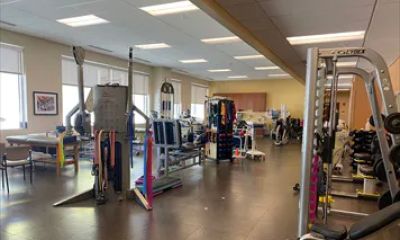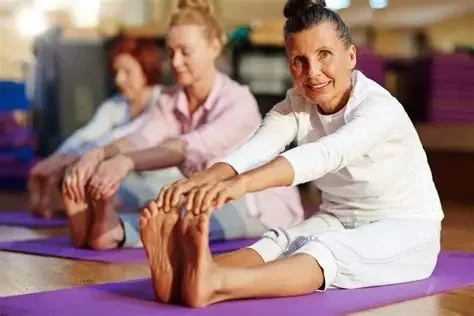1. Introduction: Exercising with Joint Pain
Exercising with joint pain can feel like a challenging balance between staying active and preventing further discomfort. Whether you're managing arthritis, past injuries, or general joint stiffness, modifying your exercise routine is crucial for maintaining your health and well-being. In this guide, we'll explore how to safely continue working out while managing joint pain, providing practical tips and exercises that promote joint health and reduce strain.

2. Why Modifying Your Exercise Routine Is Important
Exercising is essential for maintaining a healthy lifestyle, but when you have joint pain, some workouts may aggravate your condition. Modifying your routine helps reduce inflammation, alleviate pain, and prevent further joint damage. The goal is to strengthen the muscles around the joint, improve mobility, and prevent stiffness without overloading the affected area.
2.1. The Risk of Overexertion
Overexertion can cause inflammation and further damage to your joints. It's crucial to listen to your body and avoid pushing through the pain. Rest is just as important as exercise when dealing with joint issues, and overexertion can lead to long-term damage that may hinder your progress.
2.2. Focus on Low-Impact Movements
Low-impact exercises are perfect for those managing joint pain, as they put less strain on the joints. They allow you to stay active while minimizing the risk of worsening your condition. Below, we’ll look at specific exercises that you can incorporate into your routine.
3. Best Exercises for Joint Pain: Modifications and Alternatives
When it comes to exercise with joint pain, it's essential to choose movements that strengthen and support the joint without causing strain. Here are a few modified exercises and alternatives for common activities.
3.1. Swimming or Water Aerobics
Water exercises are among the best choices for joint pain. The buoyancy of water reduces the impact on your joints while still providing resistance for a full-body workout. Swimming and water aerobics can help improve flexibility, strength, and cardiovascular health with minimal joint stress.
3.2. Cycling
Cycling, particularly on a stationary bike, is another excellent low-impact exercise. It strengthens the muscles around the hips, knees, and ankles while avoiding the impact that walking or running might cause. Adjusting the seat height and resistance can further reduce the strain on your joints.
3.3. Strength Training with Modifications
Strength training doesn't have to be off-limits with joint pain. By using lighter weights and performing exercises with proper form, you can increase muscle strength around your joints, providing better support. Focus on controlled movements, and avoid exercises that involve twisting or high-impact motions.
3.4. Yoga and Pilates
Yoga and Pilates are great options for improving flexibility, balance, and muscle strength. These exercises can be modified to accommodate joint pain by avoiding deep bends and stretches that may aggravate the joints. Opt for gentle poses and focus on deep breathing to reduce stress and promote relaxation.
4. Tips for Modifying Your Routine
Incorporating modifications into your exercise routine can make a significant difference in how you feel during and after your workouts. Here are a few key tips for managing joint pain while staying active:
4.1. Start Slow
If you're new to modifying your routine, start slow. Gradually increase the intensity and duration of your exercises to allow your body to adapt. This will help prevent overuse injuries and minimize discomfort.
4.2. Use Proper Equipment
Wearing the right footwear and using supportive equipment can reduce the strain on your joints. Look for shoes with good arch support and cushioning to reduce impact on your knees, hips, and back. If cycling, make sure the bike is adjusted to your size and comfort level.
4.3. Focus on Joint-Friendly Movements
When modifying exercises, always prioritize movements that are gentle on your joints. For example, opt for straight-leg exercises over bending motions and avoid high-impact movements like running. Stretching before and after workouts can also help maintain flexibility and reduce stiffness.
4.4. Take Rest Days
Rest days are just as crucial as workout days. Overworking your joints can lead to flare-ups and prolonged pain. Make sure to schedule regular rest days and allow your body time to recover, especially after strenuous activities.
5. When to Seek Professional Guidance
If joint pain persists or worsens despite modifications to your exercise routine, it's essential to consult a healthcare provider or a physical therapist. They can help assess your condition and create a personalized plan that includes safe exercises and treatments tailored to your specific needs.
Staying active with joint pain is possible by making the right adjustments. With the proper care, you can continue to enjoy your workouts and maintain joint health for years to come. For more information on joint health and exercise, visit HeartCare Hub for helpful tips, services, and products designed to support your health journey.






















NovaCare Rehabilitation in partnership with OhioHealth - Pickerington - Refugee Road
novacare rehabilitation in partnership with ohiohealth - hilliard - west
1010 Refugee Rd Suite 210, Pickerington, OH 43147, USA